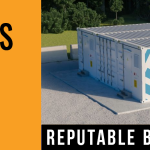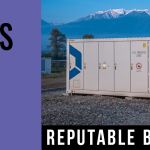 Investment management firm Gresham House is to float an energy storage fund on the London Stock Exchange next month, with an aim to raise £200 million (US$260 million) to fund 262MW of energy storage projects over the next year.
Investment management firm Gresham House is to float an energy storage fund on the London Stock Exchange next month, with an aim to raise £200 million (US$260 million) to fund 262MW of energy storage projects over the next year.
Gresham House Energy Storage Fund has already secured a seed portfolio of 70MW across five projects it has developed alongside its partner Noriker, ranging from 7MW up to 20MW. Gresham House also took over Hazel Capital in 2017, a renewables investment fund company which delivered the 15MW Lockleaze battery project, at the time one of Britain’s biggest projects of that type.
Gresham House New Energy, which will manage the fund, says it also has exclusivity over 132MW of shovel-ready sites across the UK, with a further 80MW in the advanced stages of negotiations.
Finally, more than 50MW of storage projects are also within sight of the management team, which has already invested more than £30 million alongside institutional investors, all of which is expected to be acted on over the next year.
Gresham House hopes to have completed the initial public offering (IPO) and admission to the LSE early next month, with the fund offering yields of 7% to investors.
Rupert Robinson, managing director of Gresham House Asset Management, said: “We are excited to bring this opportunity to invest in energy storage systems to institutional and high net worth investors.
“What will set the Fund apart is the proven expertise of the management team in this highly specialist sector and the cornerstone investment of more than £30 million, from the management team and institutional investors.
“We are confident that we can deploy up to £200 million in a tangible pipeline within 12 months of IPO.”
It will be the second listed fund dedicated to energy storage after Gore Street Energy Storage Fund was announced in March, targeting £100 million and also promising 7% returns.
However the fund underwhelmed in May having only raised £30 million, with half of this coming from external investors.
read more
 October 3 (Renewables Now) – LG Electronics Australia will next year start offering energy storage solutions (ESS) for residential customers in Australia, thus marking its entry into that market.
October 3 (Renewables Now) – LG Electronics Australia will next year start offering energy storage solutions (ESS) for residential customers in Australia, thus marking its entry into that market. Following a competitive bid process, Arizona Public Service Company has selected Sunverge’s intelligent energy storage system and distributed energy resources operations platform for its new residential energy storage program. The new program, Storage Rewards, provides eligible customers a behind-the-meter storage battery to help them shift power load to off-peak periods and reduce their demand, while providing grid services to APS. The Sunverge integrated platform will help customers get the most out of APS service plans that include peak-usage and demand charges. Residential customers will also receive a one-time participation award of
Following a competitive bid process, Arizona Public Service Company has selected Sunverge’s intelligent energy storage system and distributed energy resources operations platform for its new residential energy storage program. The new program, Storage Rewards, provides eligible customers a behind-the-meter storage battery to help them shift power load to off-peak periods and reduce their demand, while providing grid services to APS. The Sunverge integrated platform will help customers get the most out of APS service plans that include peak-usage and demand charges. Residential customers will also receive a one-time participation award of  Rolls-Royce Power Systems is expanding its energy portfolio from diesel and gas gensets to microgrids and energy storage.
Rolls-Royce Power Systems is expanding its energy portfolio from diesel and gas gensets to microgrids and energy storage. Energy storage firm Highview Power Inc. named David Sandalow chairman of the company’s U.S. unit.
Energy storage firm Highview Power Inc. named David Sandalow chairman of the company’s U.S. unit. One key to making electricity more efficient across the world is figuring out power storage. In recent years, lithium-ion batteries have overtaken lead-acid batteries as the industry-wide standard. But that might be set to change thanks to a new milestone in power storage innovation: zinc-air batteries
One key to making electricity more efficient across the world is figuring out power storage. In recent years, lithium-ion batteries have overtaken lead-acid batteries as the industry-wide standard. But that might be set to change thanks to a new milestone in power storage innovation: zinc-air batteries The man who keeps the electrons flowing inside one of Austria’s oldest power plants is actually often caught off guard when its turbines thrum to life with the thumping baritone of a giant washing machine.
The man who keeps the electrons flowing inside one of Austria’s oldest power plants is actually often caught off guard when its turbines thrum to life with the thumping baritone of a giant washing machine.



